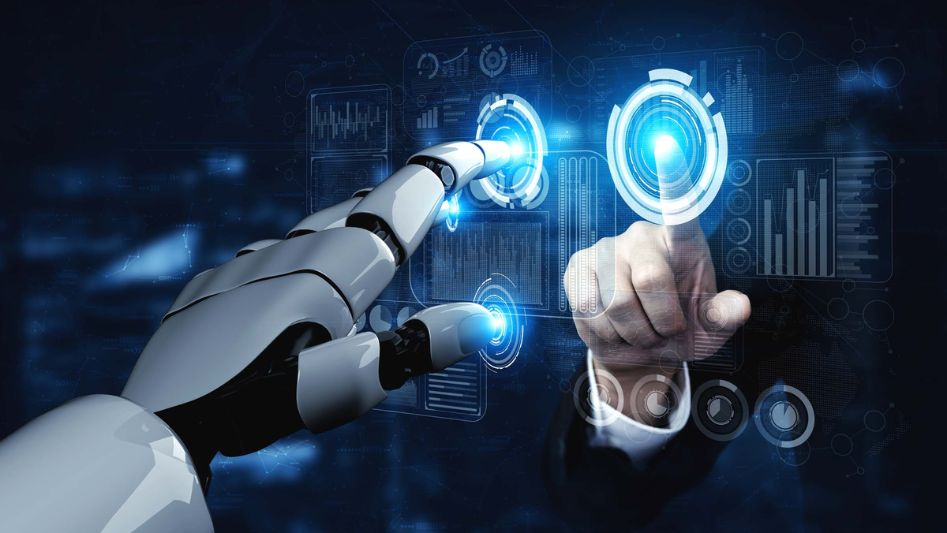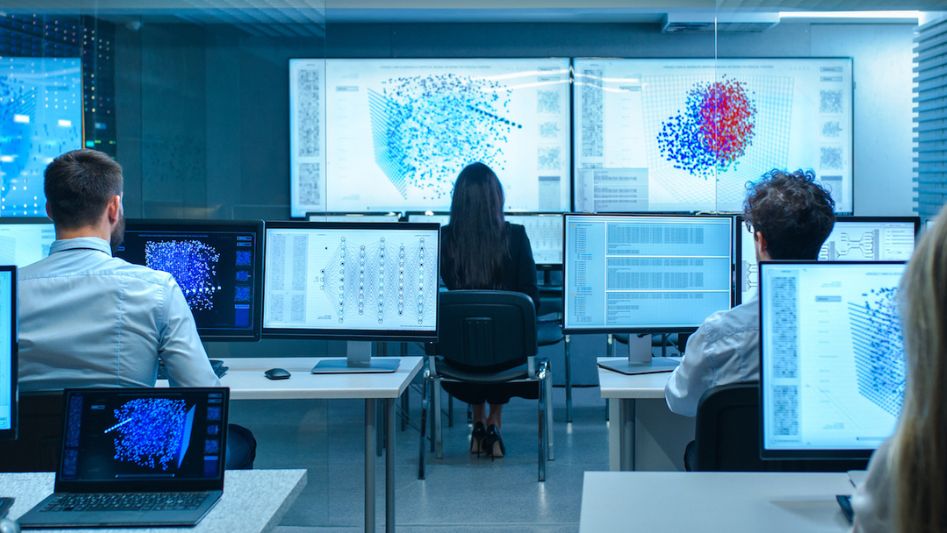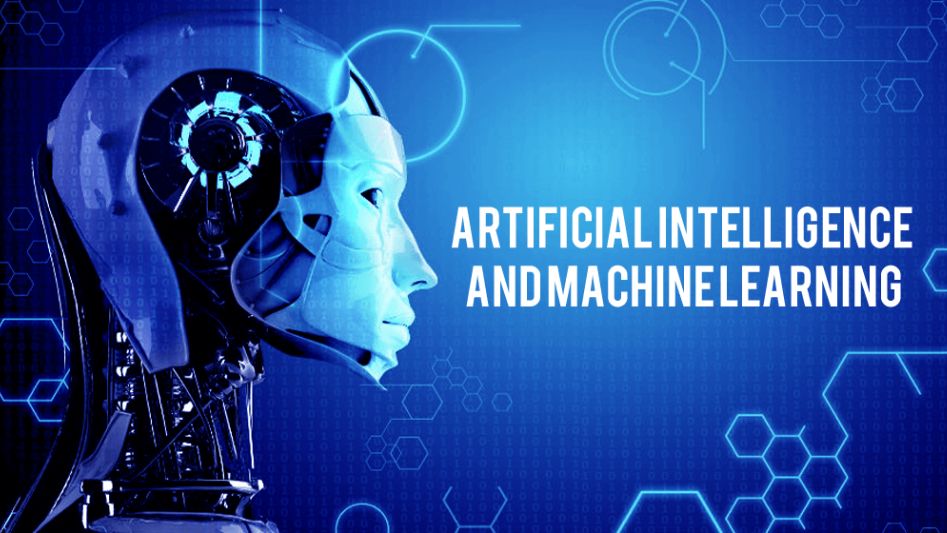In the rapidly evolving landscape of technology, two terms that are often used interchangeably are “Machine Learning” and “Artificial Intelligence.” While they are related concepts, they have distinct differences that are crucial to understanding. In this article, we will explore the dissimilarities between Machine Learning and Artificial Intelligence, shedding light on their unique characteristics, applications, and impact on various industries.
Table of Contents:
We invite you to read: “AI AND MACHINE LEARNING: SOLVING REAL-WORLD PROBLEMS”

Machine Learning: A Closer Look
What is Machine Learning?
Machine Learning is a subset of Artificial Intelligence that focuses on enabling computers to learn and make decisions without being explicitly programmed. It involves creating algorithms that learn from patterns in data, allowing the computer to improve its performance over time without human intervention.
How Does Machine Learning Work?
Machine Learning algorithms rely on large datasets to identify patterns and make predictions or decisions. These algorithms undergo training, where they analyze historical data and learn from it. Through this process, the algorithms extract valuable insights and develop models that can be applied to new, unseen data.
Applications of Machine Learning
Machine Learning finds applications in various fields, including:
- Finance: Machine Learning algorithms are used for credit scoring, fraud detection, and algorithmic trading.
- Healthcare: In healthcare, Machine Learning aids in diagnosing diseases, predicting patient outcomes, and drug discovery.
- Marketing: Machine Learning enables personalized marketing campaigns, customer segmentation, and recommendation systems.
- Transportation: Self-driving cars and traffic prediction systems are examples of Machine Learning in transportation.
- Cybersecurity: Machine Learning algorithms detect anomalies and identify potential threats in cybersecurity.
We invite you to read: “HOW AI AND MACHINE LEARNING ARE CHANGING THE FACE OF BUSINESS”

Artificial Intelligence: Unleashing Intelligent Machines
What is Artificial Intelligence?
Artificial Intelligence refers to the broader concept of machines or systems that possess human-like intelligence. It encompasses the simulation of human intelligence in machines to enable them to perform tasks that typically require human intelligence, such as reasoning, problem-solving, and natural language processing.
The Distinction between Artificial Intelligence and Machine Learning
Artificial Intelligence encompasses a wider scope than Machine Learning. While Machine Learning focuses on the development of algorithms that enable computers to learn from data, Artificial Intelligence extends to various aspects of simulating human intelligence.
Types of Artificial Intelligence
Artificial Intelligence can be categorized into two types:
- Narrow or Weak AI: Narrow AI refers to systems designed to perform specific tasks, such as voice assistants, recommendation systems, and autonomous vehicles. These systems excel at their designated tasks but lack general intelligence.
- General or Strong AI: General AI aims to possess human-like intelligence and capabilities across a wide range of tasks. This level of AI has not been achieved yet and remains an area of ongoing research.
Impact of Artificial Intelligence
Artificial Intelligence has the potential to revolutionize numerous industries and reshape our daily lives. Some notable applications of Artificial Intelligence include:
- Virtual Assistants: Voice-activated virtual assistants like Siri and Alexa are examples of AI systems that can understand and respond to human commands.
- Autonomous Vehicles: AI plays a crucial role in self-driving cars, enabling them to perceive and respond to their environment.
- Medical Diagnosis: AI systems can analyze medical images and provide accurate diagnoses, aiding healthcare professionals in decision-making.
- Natural Language Processing: AI-powered language processing tools facilitate translation, sentiment analysis, and chatbot interactions.
We invite you to read: “THE ROLE OF AI IN MARKETING: USING MACHINE LEARNING TO DRIVE SALES”

Conclusion
In conclusion, Machine Learning and Artificial Intelligence are interconnected fields, each with its distinct characteristics and applications. Machine Learning empowers computers to learn from data and improve performance over time, while Artificial Intelligence encompasses the broader goal of simulating human intelligence in machines. Both technologies are rapidly evolving and have the potential to revolutionize various industries, paving the way for a future where intelligent systems are seamlessly integrated into our daily lives.
FAQs
What is the main difference between Machine Learning and Artificial Intelligence?
The main difference is that Machine Learning focuses on developing algorithms that allow computers to learn from data, while Artificial Intelligence encompasses a broader concept of simulating human intelligence in machines.
Can Machine Learning exist without Artificial Intelligence?
Yes, Machine Learning is a subset of Artificial Intelligence. While Machine Learning can exist independently, Artificial Intelligence extends beyond Machine Learning to include other areas like natural language processing and problem-solving.
How are Machine Learning and Artificial Intelligence transforming industries?
Machine Learning and Artificial Intelligence are transforming industries by enabling automation, improving decision-making, enhancing efficiency, and unlocking new insights from vast amounts of data.
Are there any ethical concerns associated with Artificial Intelligence and Machine Learning?
Yes, there are ethical concerns regarding privacy, security, bias in algorithms, and the potential impact of AI on employment. Ensuring ethical practices and responsible development is crucial in harnessing the benefits of these technologies.
You May Also Like
- THE FUTURE OF AI IN BUSINESS: HOW MACHINE LEARNING IS CHANGING THE GAME
- THE FUTURE OF ARTIFICIAL INTELLIGENCE: A LOOK AT ADVANCEMENTS IN MACHINE LEARNING
- HOW TO APPLY MACHINE LEARNING TO BUSINESS PROBLEMS. TOP #3 KEYS ELEMENTS.
- THE POWER OF NATURAL LANGUAGE PROCESSING: MAKING MACHINES UNDERSTAND US
- HOW AI IS REVOLUTIONIZING HEALTHCARE: THE POTENTIAL OF DEEP LEARNING
HELPFUL LINKS
- Artificial intelligence (AI) vs. machine learning (ML)
- Artificial intelligence (AI) vs. machine learning (ML)
- Data Science vs Machine Learning and Artificial Intelligence: The Difference Explained (2023)
- Deep learning vs. machine learning: What’s the difference?
- 8 Helpful Everyday Examples of Artificial Intelligence


Recent Comments